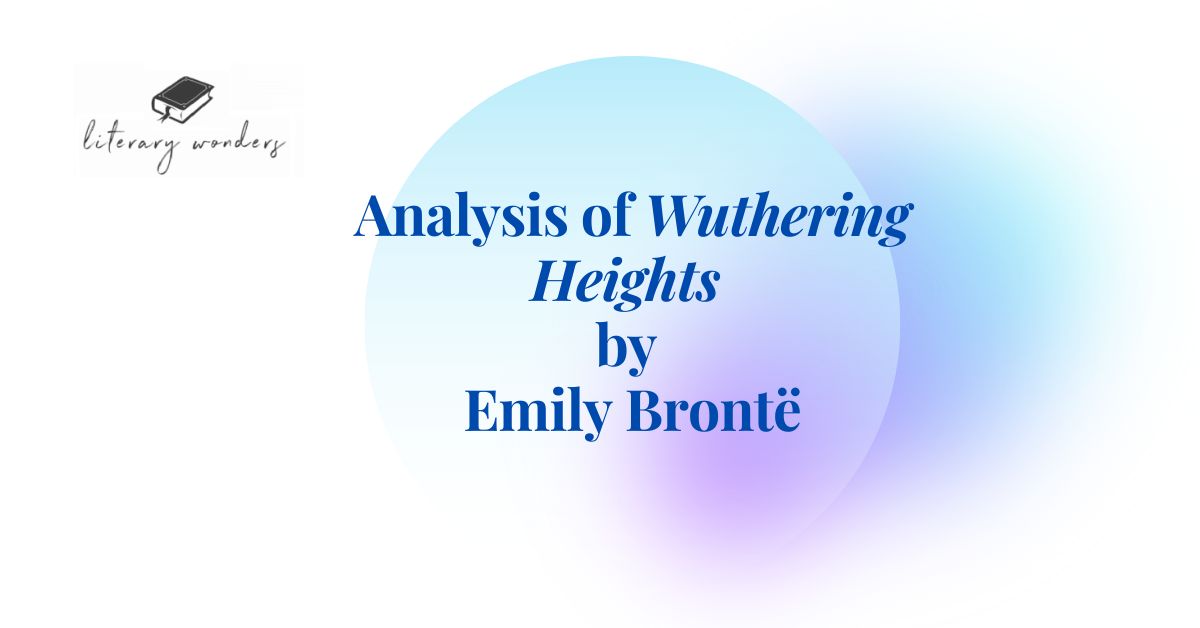Summary of Wuthering Heights
Wuthering Heights is a famous novel written by Emily Brontë. First published in 1847, it tells the story of Heathcliff, an orphan boy who is taken in by the Earnshaw family and grows up with their children, Catherine and Hindley. Catherine and Heathcliff develop a deep and intense bond, but when Catherine decides to marry Edgar Linton, Heathcliff is devastated and runs away.
Years later, Heathcliff returns to Wuthering Heights as a wealthy and powerful man. He seeks revenge on those who wronged him and sets his sights on Catherine’s daughter, Cathy. Cathy is drawn to Heathcliff, but her love for Edgar Linton ultimately leads her down a tragic path.
The novel is framed as a series of narratives, with the story being told by different characters. The first narrator is Lockwood, a tenant who rents Thrushcross Grange, the nearby property owned by the Linton family. Lockwood is curious about the area’s history and becomes fascinated with the story of Heathcliff and the Earnshaws.
The different narrators give the reader a glimpse into the complex and often violent relationships between the characters. Heathcliff is a deeply troubled individual consumed by his desire for revenge. Catherine, meanwhile, is torn between her love for Heathcliff and her desire for social status and wealth.
Analysis of the Novel
Wuthering Heights by Emily Brontë is a classic novel that has captured the imagination of readers for over 170 years. Set in the rugged Yorkshire moors, it tells the story of Heathcliff, an orphan boy who is taken in by the wealthy Earnshaw family and falls in love with their daughter, Catherine. But their love is doomed, as Catherine chooses to marry someone else, and his desire for revenge consumes Heathcliff.
One of the most striking aspects of Wuthering Heights is the intense and complex characters. Heathcliff, in particular, is a character who has fascinated readers for generations. He is both villain and victim, cruel and sympathetic, and his motivations are often shrouded in mystery. Some readers have interpreted him as a symbol of nature’s dark, brooding power. In contrast, others see him as a critique of Victorian society’s social norms and conventions.
Catherine, too, is a fascinating character, torn between her love for Heathcliff and her desire for social status and security. Her decision to marry Edgar Linton, a man she does not love, is a pivotal moment in the novel and sets the tragic events that follow in motion.
Another notable aspect of Wuthering Heights is its structure. The novel is framed as a series of nested narratives, with the story being told by different characters at different times. This technique allows Brontë to explore the same events from multiple perspectives, adding depth and complexity to the narrative.
At its core, Wuthering Heights is a novel about love, revenge, and the destructive power of obsession. Brontë does not shy away from depicting the darker aspects of human nature, and the novel is full of violence, cruelty, and manipulation. But it is also a novel that celebrates the power of nature, the enduring bonds of love, and the resilience of the human spirit.
Major Themes in the Novel
Several themes run through the novel, some of which are discussed below.
- Love and Revenge: One of the novel’s primary themes is love and revenge. The novel explores the destructive nature of revenge and the power of love. Heathcliff embodies this theme as he seeks revenge on those who have wronged him while obsessing over Catherine, his true love. The love between Catherine and Heathcliff is intense, but their passion is destructive and ultimately leads to their tragic end.
- Class and Society: Another central theme of Wuthering Heights is class and society. The novel portrays the rigid class system of Victorian England and how it affects the characters’ lives. The Earnshaws are of a lower class, while the Lintons are of a higher social class. This difference in status is a significant barrier between Catherine and Heathcliff’s relationship. It also drives Heathcliff to seek revenge on those who have looked down upon him and his social status.
- Nature and the Supernatural: The moors play a significant role in the novel, and the natural world is an essential theme. The harsh and rugged landscape of the moors represents the wildness and unpredictability of human emotions. The supernatural is also present in the novel, with the ghost of Catherine haunting Heathcliff and the possibility of a supernatural connection between Catherine and Heathcliff.
- Identity and Self-Destruction: The theme of identity and self-destruction is present in Wuthering Heights, particularly in the character of Heathcliff. Heathcliff’s identity is shaped by his past and experiences, ultimately leading to his self-destructive behavior. His desire for revenge and obsessive love for Catherine leads to his downfall and destruction.
Thus, Wuthering Heights is a complex novel with several themes that explore the human condition. Love, revenge, class, society, nature, the supernatural, identity, and self-destruction are just a few of the themes that make Wuthering Heights a classic piece of literature that continues to captivate readers today.
Suggested Readings

